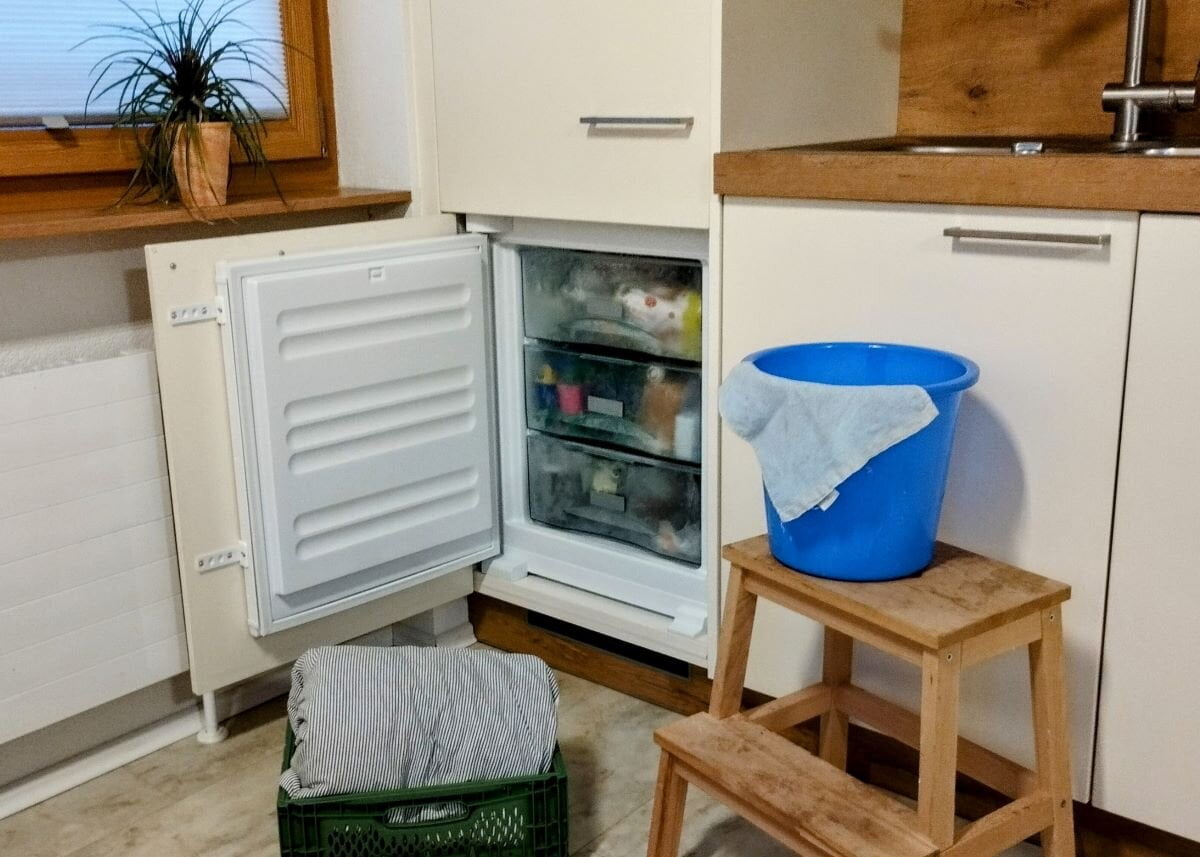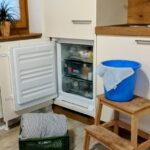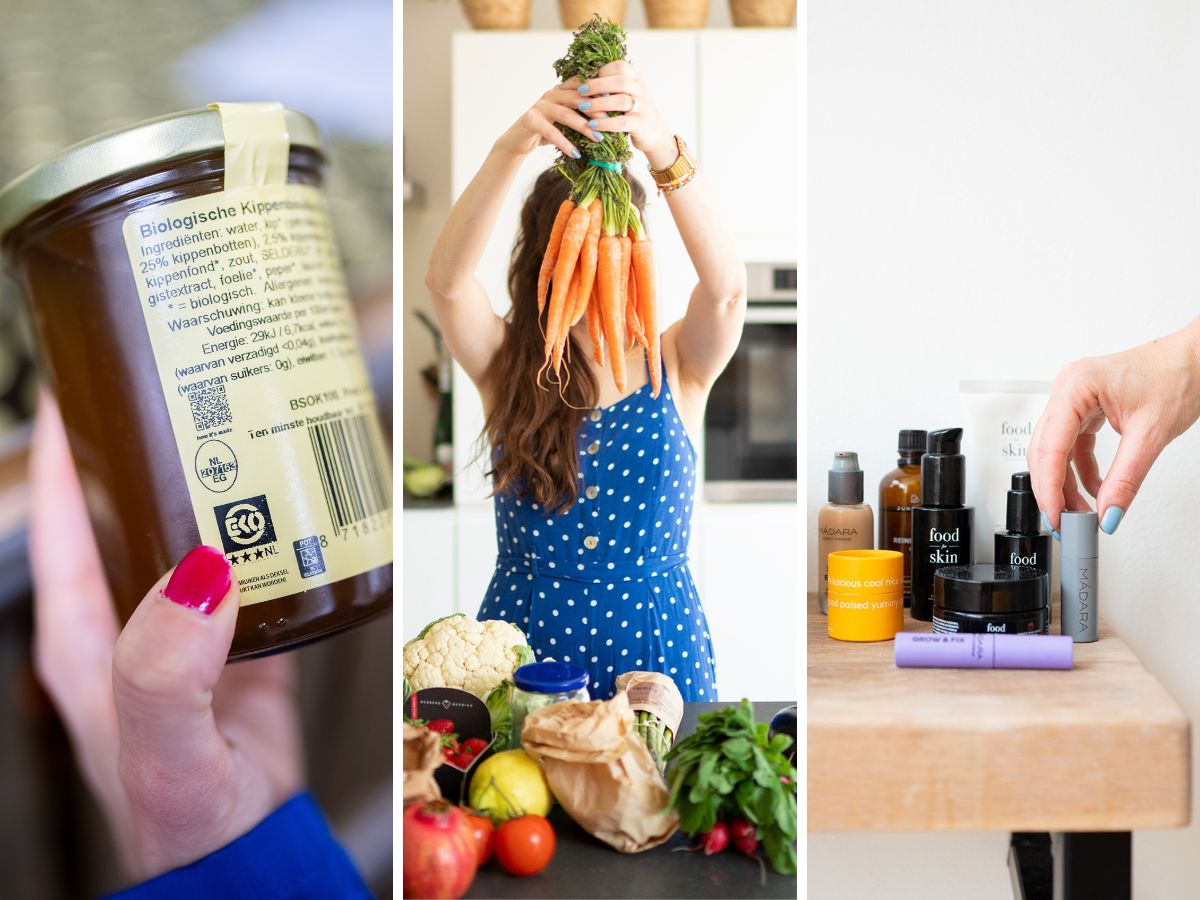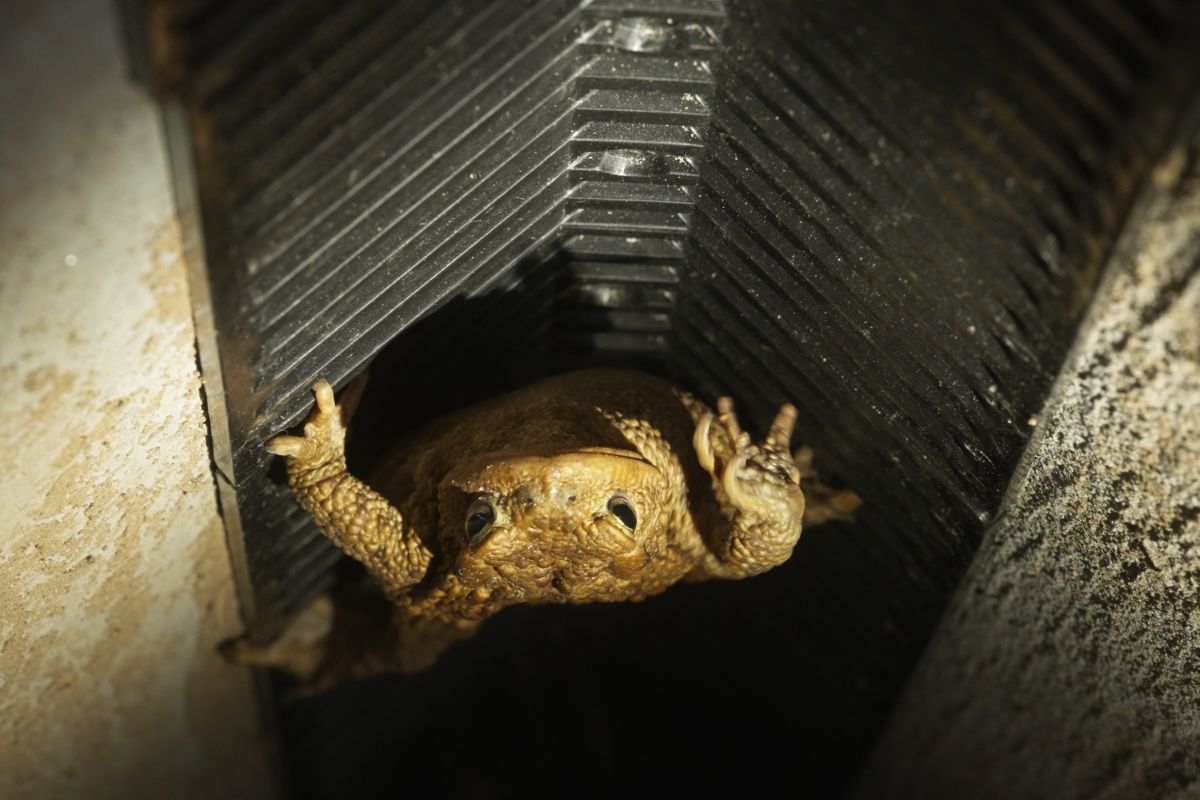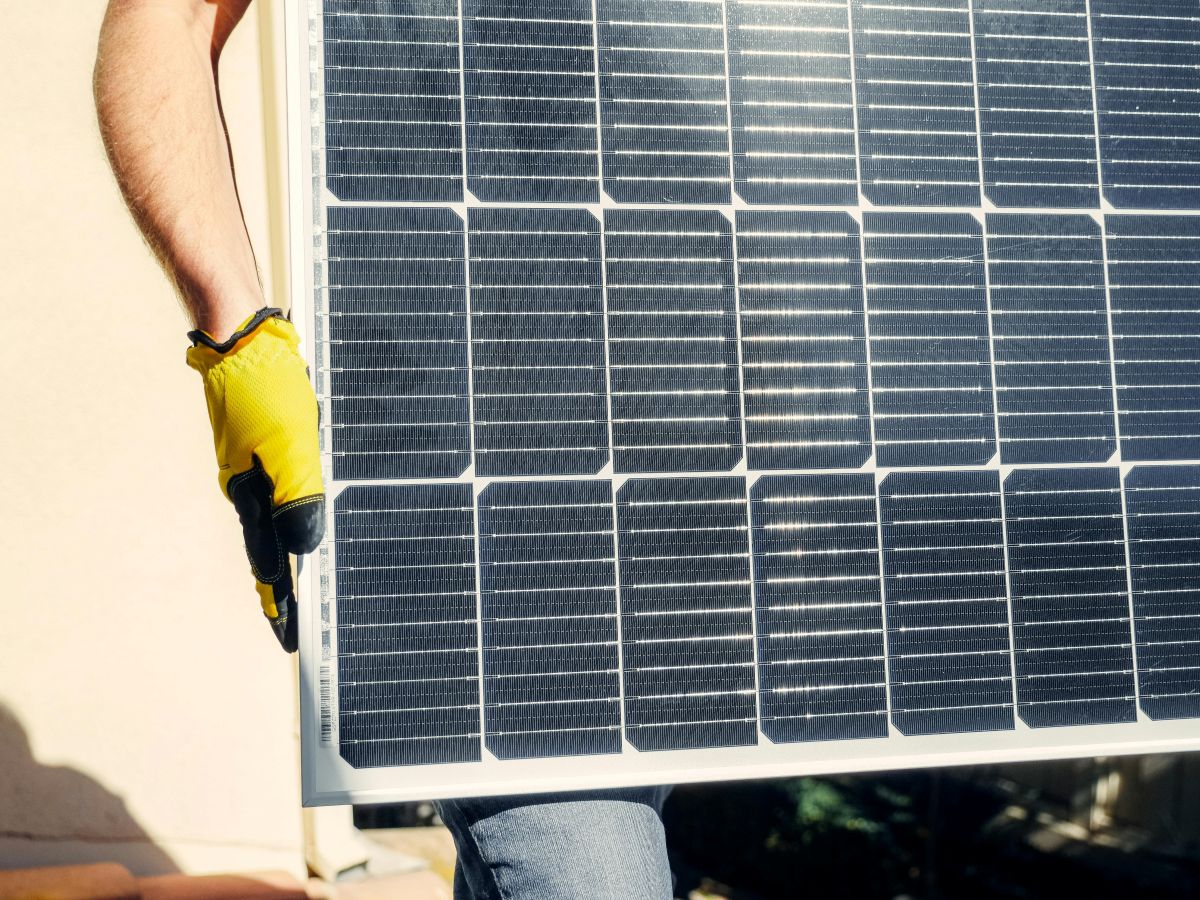Who could live without a freezer? A freezer, even if it's a small compartment in your fridge, is darn handy for storing food. It means you waste less and you always have a buffer in the house. But of course, you also need to maintain it properly. It will last longer and save energy. Mascha is an expert in eco-friendly cleaning and shares her best cleaning hacks with us. This time she shares how she takes good care of her freezer and how she uses this energy guzzler more efficiently. Guess what? Again, you won't need as much heavy-duty cleaning stuff as you think.
The advantages and convenience of a freezer
As quite an energy guzzler, a freezer is not exactly known as an energy-efficient appliance, and yet this appliance is an important aid to a more sustainable life. Producing and transporting our food is incredibly harmful to the environment. So you can imagine that wasting food is therefore the very worst thing you can do. So much effort has gone into producing the food and getting it here, and then we throw food away quite often. On average, a third of all food is wasted, which is 33 kilos of food and 45 litres of drink per person per year.
That fine freezer that is admittedly bellowing 24/7 is an important tool in the fight against food waste. Food keeps much longer if you freeze it and you can freeze much more than you think. For example, many products can be kept for up to three months longer in the freezer. Expiring THT date? Freeze it and it will keep for ages. We have previously written an extensive article about that THT date, should you want to know more about that. But also vegetables, fruits, herbs, pizza dough, cheese and much more can be kept longer by freezing. This is even more effective than storing it in the fridge where it will spoil and wilt after a few weeks anyway. You can also freeze seasonal produce when it is abundantly available and cheap, so you can enjoy it all year round. In short: the freezer is even a sustainable budget tip!
What's sustainable about cleaning your freezer?
A freezer is on 365 days a year, 24 hours a day in most households. By using your appliance correctly, keeping it clean and maintaining it properly, you make the most efficient use of your chest freezer, freezer compartment or freezer. This way, you ensure that your appliance lasts longer, you don't have to face expensive repairs and you are less likely to have to buy a new one. Moreover, proper cleaning and maintenance ensures that your freezer does not use too much electricity. A 2 mm layer of ice even seems to 10% more energy consumption to ensure. And especially if ice gets in the way of the door closing properly, that energy loss can add up considerably. Defrosting and cleaning your freezer regularly is therefore good for your budget and good for the environment.
The footprint of a freezer
Unfortunately, the production of an appliance like a freezer also results in environmental drawbacks. That's because of the raw materials and energy for production and transport that are all required before the appliance is in your home. But it doesn't stop there. About three-quarters of your freezer's environmental footprint is in its energy consumption. An average Dutch household uses about 2,480 kWh of electricity per year and of that, 400 kWh is due to refrigerators and freezers. So it can also save a lot of money to use them sparingly! If you have an old inefficient freezer, it is more environmentally friendly to exchange the old appliance for one with the highest possible energy label (A++ or A+++). The energy savings far outweigh the negative impact of producing a new appliance and disposing of your old freezer.



Left: even a small layer of ice in the freezer can cause significantly higher energy consumption. Middle: keep the food in a crate with an old blanket while cleaning the freezer and right: do a quick check for shelf life of the products when putting them in.
This is how to clean the freezer in an environmentally friendly way
It seems like there is a different cleaning product for every cleaning job, appliance or surface these days. Before you know it, your cleaning cupboard is bulging and you are running out of money. Because especially those special agents can be quite pricey. Which is why I have good news: for a lot of cleaning jobs, you don't need that much cleaning power at all and you can get by with simple cleaning products. The same goes for cleaning the freezer. Put in your sink cabinet natural vinegar, baking soda, citric acid and green soap and you avoid buying dozens of plastic bottles.
For eco-friendly freezer cleaning, I use a soapy green soap. This fine soap from grandmother's time is still a perfect choice for getting things shiny and hygienically clean. It is budget-friendly and also an eco-friendly choice. We love that at thegreenlist.nl!
Environmentally friendly cleaning of your freezer
Tools
- large box, cooler bags or shopping crate for the frozen food
- blanket
- large pan or bowl
- kettle
- (bath) towels or old rags
- little green soap
- bucket or tub
- soft brush
- soft cloth
- tea towel
- hoover
- option: old toothbrush
Instructions
- Turn off your freezer using the button or by unplugging it. Remove all frozen food from your freezer. Make sure the food is stored properly so it doesn't thaw. If it is colder than 10°C outside, the easiest way to store your frozen food is outside. Put everything in a crate, box or cooler bags on your balcony or in your garden. Put a blanket over it to prevent the food from heating up very much. Is it warmer outside? Then leave your food in a cool place in the house and put cooling elements with your food in the box or crate so it doesn't heat up too much.
- Remove the drawers from your freezer and set them aside to clean.
- Fill your kettle and boil a full jug of water. Put the water in a large pan. Place this pan without a lid in your freezer and close the door. Place one or more (bath) towels or old rags under and in front of the door of your freezer to catch any meltwater. You will see that the ice in your freezer melts very quickly due to the boiling hot water. If you still see a lot of ice after 30 minutes, make a new pan of boiling water and repeat the steps until your freezer is completely ice-free.
- Make suds in a bucket with green soap (or a scoop of baking soda and some lemon juice). Using less hot water and properly dosing your detergent is the most sustainable. Use about 1 tablespoon of green soap per litre of water or about 2 tablespoons of baking soda per litre of water.
- Clean all drawers with your soapy water using a soft brush or cloth. Let these items drain and dry well with a tea towel.
- Take a clean, soft cloth and clean the rubbers of your freezer doors well with the same soapy water. Check if your rubbers allow your door to close properly. If not, you can buy new rubbers. This is a sustainable choice, as a properly closing door ensures that the freezer uses less energy.
- Clean the inside of the door well with your cloth and also check the drain channel of your freezer. If there is dirt in the gutter, the condensation cannot drain properly. Clean the gutter with the tip of your cloth or an old toothbrush.
- Can you move the freezer? Then carefully pull it off the wall and use the brush of your hoover to vacuum the grilles at the back. Then clean these with your cloth. A clean grille can lose its heat better and ensures that your freezer does not use too much energy. Put the freezer back, but don't place it too close to the wall to make the refrigeration work as efficiently as possible.
- Put the drawers back in the freezer and place all the food back in the appliance.
- Turn the freezer back on and close the door tightly. A few hours later, check that the temperature has returned to normal. The ideal temperature is -18°C. Colder is not necessary and only causes unnecessary energy consumption.
Got dirty fingers on the outside of your freezer that won't come off? Use a homemade abrasive which we shared earlier. Simple and cheap!
Additional sustainable freezer tips
- Schedule defrosting your freezer every six months by making a note in your diary. That way you won't forget!
- Eat as much freezer stock as possible before defrosting your freezer. That way, you don't have to keep too many items cool during cleaning and you avoid spoilage.
- When clearing out your freezer, check that no food goes back that is approaching its expiry date. Is there food that needs to be used up quickly? Include it in your upcoming weekly menu.
Freezer cleaning
By following this roadmap regularly, your freezer will keep working properly and you won't use too much energy. Moreover, good maintenance will ensure a longer life for your appliance. These are good choices for the environment and your wallet. And don't forget to replace your old appliance with an energy-efficient one, because that is the biggest sustainable hit. These appliances have become much more efficient in recent years. Moreover, old ones can be recycled well if you dispose of them properly. So buying a new freezer pays off. Do you have another great freezer cleaning tip? Let us know. You can use the follow and contact buttons at the bottom of the page with thegreenlist.nl get in touch.
More green cleaning tips from thegreenlist.nl
- This is how you make the fridge eco-friendly clean.
- That's how you get the dishwasher spotlessly clean.
- That's how you get the dryer well clean.
Photo credits: main image: Kirsten Schoner, other photos: Mascha Bongenaar.

